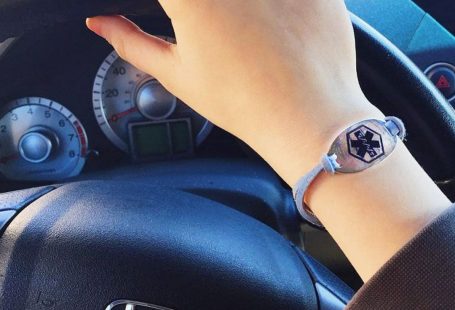When it comes to ensuring the safety and well-being of children with medical conditions, every precaution counts. Medical IDs are one such measure that can make a significant difference in an emergency. These simple, wearable devices provide crucial information about a child’s medical condition, allergies, or special needs, alerting caregivers, teachers, and first responders to take immediate and appropriate action.
As a parent or guardian, understanding the importance of medical IDs for children can be a vital step in safeguarding their health and providing peace of mind.
What situations require a medical ID for a child?
Medical ID jewelry, such as bracelets or necklaces, allow essential medical information to be readily available and easily accessible. For children with chronic illnesses, allergies, or special medical needs, having this vital information at hand can help caregivers and medical professionals respond promptly and accurately.
Chronic Illnesses
The most common medical illnesses requiring medical IDs in children include:
- Diabetes: children with diabetes, especially type 1 diabetes, may need to wear a medical ID to alert others of their condition
- Epilepsy: a medical ID can inform emergency responders about potential triggers and appropriate first-aid measures in the event of a seizure
- Asthma: children with asthma may benefit from wearing a medical ID during physical activities or outings which can indicate their asthma diagnosis, preferred inhaler, and emergency contact information
- Congenital Heart Defects: children with congenital heart defects wear medical IDs to inform healthcare providers about their heart condition and any specific precautions or medications needed
- Hemophilia: children with bleeding disorders may wear medical IDs to ensure prompt and appropriate treatment in case of injuries or accidents
- Cystic Fibrosis: medical IDs can convey information about this condition and any specific treatment requirements
Allergies
Children with severe allergies to foods, medications, or insect stings may require medical IDs to communicate their specific allergens. This information is essential in emergencies to prevent exposure to allergens that could lead to anaphylaxis.
Special Medical Needs
Children that have communication or potential sensory challenges, such as with Autism Spectrum Disorder, might wear a medical ID to alert others and first responders about their condition. Children who use assistive or medical devices or who need assistance with mobility might also have a medical ID to inform healthcare professionals about the level of assistance needed.
What to engrave on a medical ID for a child?
Engraving the right information on a medical ID for a child is crucial to ensure that it effectively communicates the child’s medical condition and needs in case of an emergency. Here are some essential details to include when engraving a medical ID for a child:
- Child’s full name
- Emergency contact (parent or guardian’s contact information)
- Medical conditions
- Allergies
- Medications
- Doctor’s name and phone number
- Any other specific instructions that would be helpful for medical personnel to know in an emergency such as where an EpiPen is located in the case of severe allergies
What style of medical ID should I get for a child?
Medical IDs are available in various styles, colors, and designs, making them appealing to children. Modern medical IDs have evolved from basic tags to fashionable accessories that children can wear with pride. Consider the age and any other factors that might affect the child’s comfort and willingness to wear the medical ID. Choosing a design and material that the child likes can make them more likely to wear it consistently. There are also “safety hooks” on some versions of bracelets for children which can be helpful if the child is prone to fidgeting so that the bracelet is not accidentally removed.







